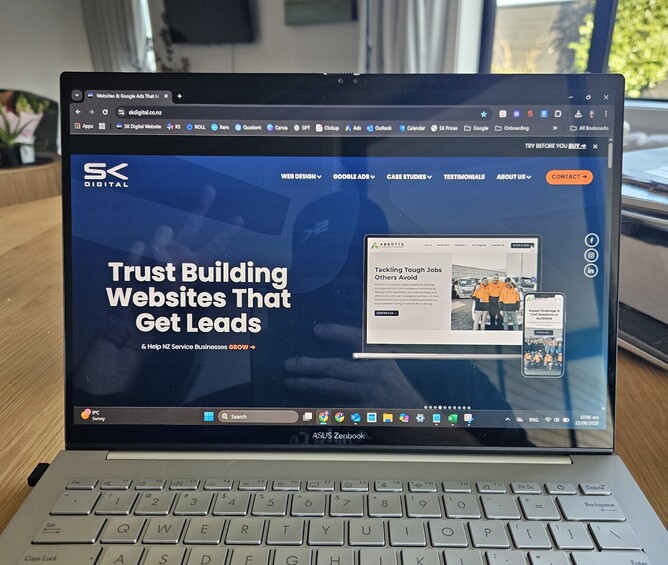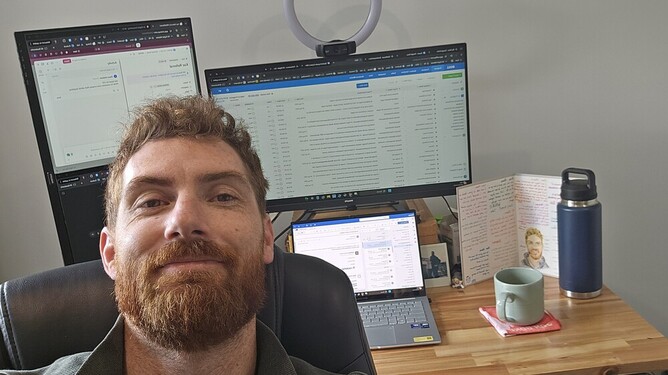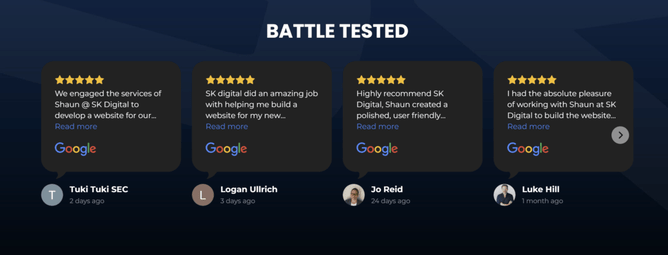Business is competitive - you need to stack the odds in your favour to win more work.
The goal of a website is simple: help people find you, trust you, believe you can fix their problem, and serve as a salesman that never sleeps.
And here’s the thing - whether you’re a 20-year vet with hundreds of jobs under your belt, or just starting out with bugger-all credibility, the principle is the same: people only hand over their hard-earned cash if they trust you.
You can’t skip the first part
If you’re just starting your business journey, you have to earn the reason why people would trust you. No runs on the board = no credibility.
That means:
Do the freebies.
Do the heavily discounted jobs.
Collect testimonials, reviews, and photos from those first clients.
Take the feedback, improve, repeat.
Document your progress, even if it feels small.
Do that consistently and suddenly you’ve got proof. And proof is credibility.
👉 Related: Starting a Business? Maybe Hold Off on That Website.
Do the freebies now, win the real jobs later
Credibility isn’t magic - it’s built one small job at a time.
When you’ve got that foundation, that’s when your website, socials, and other marketing can actually work for you.
Stack your proof everywhere
If you’ve already got some history behind you, this is where things get fun. You stack your proof everywhere a potential client looks:
Testimonials from happy clients.
Photos and videos of your work.
Case studies around your process and the problems you’ve solved.
Speak naturally - no fluff, just the truth.
Put your face and your team’s faces to the business - confidence matters.
👉 Related: Websites That Work for Kiwi Trades
Real-world proof
Leisurecom Homes - They don’t just say they can deliver homes to tricky hilly sites and beach towns. They show it. We helped them build a massive project directory that proves they can do the jobs other builders put in the “too hard” basket. That’s credibility in action.
Abbotts - A drainage company expanding into bigger civil jobs. They didn’t want to lose sight of their bread-and-butter drainage work, but also needed to show capacity for larger projects. Solution? A project library stacked with evidence they can manage both.
👉 Related: Case Study – Leisurecom Homes
👉 Related: Case Study – Abbotts
No sensationalism, just facts
The language should feel real and grounded. The design should be easy to understand. Visitors should leave with absolute clarity you can help - because that’s the bloody truth.
Extra trust signals
Credibility isn’t only testimonials and photos. Stack other trust markers too:
Industry memberships and accreditations (Sitewise, Master Builders, Licensed Building Practitioners).
Simple guarantees (e.g. “We turn up when we say we will”).
Showing your WHY (provide for your family, build stuff that lasts, give back to communities).
If you’re motivated only by money, people smell it a mile away. Snake oil operators don’t last. The businesses that thrive are the ones that stand for something real.
Your personal brand is your first business asset
Your face, your story, your WHY - that’s credibility.
Being visible as the owner shows you’re invested. If you fumble, it reflects on you personally - scary, sure, but it also shows the market you actually care. Your own reputation is on the line. That builds trust.
👉 Related: Here's My Personal LinkedIn Account
Walk the walk, then show it
Credibility isn’t just built, it’s displayed. If you’re doing the mahi, show it:
Use your social accounts - boost posts that show your wins.
Start an email list (Mailchimp is fine) and share updates with your audience.
Add the wins to your website as you go.
Drop case studies, testimonials, or before-and-after pics into your quotes.
You’re not pushing or cornering people into saying yes.
You’re showing them why it’s silly to say no.
👉 Related: How to Get Google Reviews
The wrap
Credibility is the currency. You either build it through action or amplify it through smart presentation.
But here’s the line to remember:
You can’t market your way out of zero credibility.
Do the mahi first - then show the receipts.










